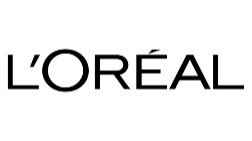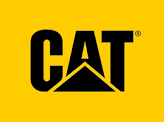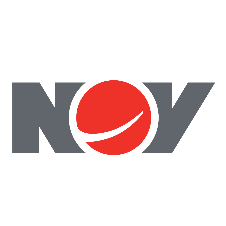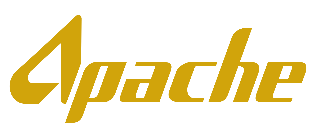Political Patterns
Finance and politics converge every four years as Americans go to the polls to elect the President of the United States. Since the early 1950's, the Dow Jones Industrial Average has gone up 10% on average during presidential election years when an incumbent president is up for reelection. The purported rationale is that first-term sitting presidents tend to go into campaign mode to earn votes with economic stimuli, such as job creation and tax cuts. As a result, the third year has often been the strongest of the four-year cycle; and the fourth year is the second strongest. A recent notable exception is 2008, when the Dow sank nearly 34% as the Great Recession unfolded.
True to historical pattern, recent stock market performance has been robust with indices repeatedly meeting new highs helped by the tax overhaul in late 2017 that lifted corporate profits and by an aggressive push to cut regulations by the current administration.
Investors who remain invested through economic and political cycles and stick to their investment plans have the best chance of earning or exceeding market returns.
A new report from economist Matthew Higgins of the New York Federal Reserve Bank suggests that the U.S. effective corporate tax rate at 15% is now the second lowest among the global top 20 economies. The new tax law has encouraged business investment, which has in turn improved employment and wages.
The regulation overhaul has been significant, but it is hard to quantify the results. The Trump administration claimed in its first year in office to have repealed 22 regulations for each new rule issued and cut regulatory costs by $8.1 billion. A closer look reveals a more nuanced result.
A number of those repealed were from a flurry of regulations approved in the final months of the outgoing Obama administration, which had yet to have a full impact. The main effect of the deregulation effort has been the huge drop in new regulations. During the first year of the new administration, only 156 regulations were approved – a substantial reduction compared with the Obama and Bush administrations, when 510 rules were approved during President Obama’s first year and 415 in President Bush’s. Overall the consensus is that the reduction and slowdown in regulation has been a real, net positive for the U.S. economy.
Although it is tempting to use contemporary fiscal and monetary policies or historical patterns such as presidential cycles to predict market performance, you can’t extrapolate economic conditions or rely on past patterns to repeat themselves. There are just too many forces at work that affect market conditions. At some point, the boost from tax cuts could begin to weaken if investors fear that the tariff battle between Washington and Beijing will become intractable and increase costs for businesses. In addition, a presidential election where the competing parties hold very divergent views of economic policy could increase uncertainty and, in turn, spark market volatility. On the other hand, a decent trade deal with China, along with an economy that’s still growing with an accommodative monetary policy, could extend the bull market further.
Periodically, market pundits and prognosticators cast warnings about the length of the bull market or the hazards of political or economic events and, therefore, recommend reducing or even eliminating exposure for a period of time. However, the collective evidence is that missing out of a market’s best quarters can decimate long-term gains. Researchers have found that trying to time re-entry at lower levels often leads to substantially lower long-term results. Looking back over a 20-year period from January 1, 1999 to December 31, 2018, if you missed the top 10 best days in the stock market, your overall return was reduced by half. Many of the best days of the market come right after its worst days. A recent J.P. Morgan study indicated six of the 10 best days occurred within two weeks of the 10 worst days.
Delta calibrates its exposure to the market with cash. As stock market valuations increase our cash position tends to increase as we trim overvalued positions. To initiate a new position, we require the market (e.g., purchase) price to be at an adequate discount or “margin of safety” to our estimated long-term economic value. Typically, we will find ourselves putting cash back to work – thus reducing our exposure to cash – in depressed markets when undervalued prices are more readily available. This tactic is distinct from timing of the market, which is making a macro call on the near-term direction of the overall market.
Attempting to time the market entails risk. Investors who remain invested through economic and political cycles and who stick to their investment plans have the best chance of earning or exceeding market returns. While elections and an aging bull market may increase uncertainty, avoiding exposure to the market, as benign as it sounds, may translate into missing sudden and unanticipated rebounds that are essential to long-term performance.
Company Comments
Comments follow regarding common stocks of interest to clients with stock portfolios managed by Delta Asset Management. This commentary is not a recommendation to purchase or sell but a summary of Delta’s review during the quarter.
L’Oreal is a leading manufacturer in the global cosmetics market with a presence in 150 countries on five continents. The company has excellent market share positions in most regions of the globe. The scale and breadth of L’Oreal’s brand portfolio and geographic reach give it sustainable competitive advantages. The company’s success over many years is attributable to the development of premium products, global branding and a number of product innovations geared to targeted regions.
Much of L’Oreal’s recent growth has been organic. A key driver of growth has been innovative products coupled with the impressive amount spent on advertising and promotion (30% of sales versus 25% on average for the sector). By marshalling its resources on a limited number of brands, the company can launch new products using the identity of an established brand. A healthy investment in research and development (R&D) has also contributed to growth. The company invests over 3% of sales on R&D. With 20 research centers around the world, the company’s research is focused on “universalizing beauty” – that means adapting it to local tastes and culture and making it accessible to all. As a result of its robust R&D budget, L’Oreal launches an average of 200 to 300 new products a year, representing 15% of sales.
L’Oreal’s success over many years is attributable to the development of premium products, global branding and a number of product innovations geared to targeted regions.
L’Oreal’s emerging markets will remain a key growth driver going forward, and beauty as a category is well positioned to benefit from growing consumer spending in many of these regions. Europe and North American markets are mature with high penetration and well established competitors.
In contrast, the company is seeing growth in newer markets where the middle class is growing and eager for high quality makeup and skincare products. L’Oreal is targeting to more than double its customer base from 1.2 billion to 2.5 billion over the next 10 to 15 years by focusing on product categories that are popular in emerging markets.
Asia remains a major area of growth in emerging markets and now represents over 27% of sales; it is L’Oreal’s second largest market globally. Asia currently accounts for nearly 40% of total global cosmetics spending and 55% of total global skincare spending. L’Oreal is now the No. 1 cosmetics player in China, with leading positions in skincare, makeup and colorings. It only recently launched its hair care products there, which comprise 25% of the Chinese market. With these new category introductions, L'Oreal should continue to gain market share in this important region.
The company maintains worldwide pricing for its products so profit margins in emerging economies are comparable to those produced in developed ones. A sustainable competitive advantage is the company’s ability to cover all price points with a range of brands. L’Oreal can establish a presence in an emerging economy by introducing lower price point brands without damaging the later introduction of its higher priced premium brands.
We believe L’Oreal can continue to grow its revenues mid-single digits due to growth potential in Asia and other emerging markets despite its exposure to mature North American and European markets. Profit margins are likely to remain high driven by cost efficiency measures in marketing and supply sourcing as L’Oreal consolidates the operational aspects of its disparate businesses. We believe L’Oreal will be able to maintain long-term operating profit margins in the upper-teens and earn a long-term rate of return of over 4%.
Honeywell International Inc. { HON }
Honeywell, one the world’s largest industrial and manufacturing conglomerates, is organized into four diverse segments: Aerospace, Home and Building Technologies, Performance Materials, and Safety and Productivity Solutions. The broad range of products enables the company to offset risk in any market or region with strength in another. In recent years, the company has benefited from strength in the global aerospace market, offsetting domestic U.S. market weakness and inflationary pressure.
Much of the positive shift in Honeywell’s fortunes can be attributed to its recently retired CEO and successful transition to a new one. David Cote arrived in 2002 while the company was struggling with two conflicting cultures as a result of the merger with Allied Signal. The company also was dealing with a highly cyclical and commoditized product portfolio. As the new CEO, Cote quickly meshed the cultures and shifted Honeywell’s portfolio toward technologically sophisticated offerings with bigger competitive moats and higher margins. The company focused on core growth themes of energy conservation, power generation and industrial safety. In the subsequent decade, Cote diligently transformed Honeywell, making 70 acquisitions and jettisoning 40 slower growth, cyclical businesses.
Once Honeywell’s products – which range from cockpit controls to engines – are integrated into an aircraft, it is very difficult for aircraft manufacturers to switch vendors as long as the aircraft is in use.
In April 2017, Darius Adamczyk succeeded Cote as CEO – after Cote’s 15-year tenure – and has continued the operating legacy of his predecessor by spinning off slower growth business and acquiring high growth technology and software companies that can be integrated into existing business lines.
Honeywell allocates a high percentage of cash resources to research and development (R&D) spending. R&D spending has averaged over 4.5% of revenues – roughly twice the industry peer average – and is targeted at high growth areas to enhance product attributes and differentiation. The U.S. government typically adds an additional 50% to the firm’s R&D funding for the company’s national defense projects, which pushes spending to nearly 7% of sales.
In addition to new product offerings, Honeywell has become a much more efficient manufacturer over the past 10 years. A number of operating initiatives – which include Six Sigma, Honeywell Operating System, Functional Transformation, etc. – implemented since 2003 have pushed the company’s key operating metrics towards the upper end of the peer group. On a cumulative basis the rewards have been transformative. By keeping costs like labor relatively flat, the company generates operating leverage that magnifies returns. Since 2004, operating margins have grown from 7.6% to 18% in 2018.
Honeywell’s Aerospace segment, nearly 40% of sales, has high competitive entry barriers. Once its products – which range from cockpit controls to engines – are integrated into an aircraft, it is very difficult for aircraft manufacturers to switch vendors as long as the aircraft is in use. This provides a highly visible recurring revenue stream in the form of maintenance service contracts.
Honeywell has been an extremely cautious buyer of new businesses. It focuses on small, easy- to-integrate businesses that have the potential to deliver immediate and significant cost savings. Every acquisition must meet a highly specific checklist with an emphasis on integrating the business. On average, Honeywell has paid around 12 times earnings for 70 acquired companies and tripled profits.
Based on the financial characteristics outlined, we have assumed that Honeywell can grow its revenue at an average annual rate of over 3% over the next decade. At this pace of growth and given improved operating efficiency, we believe cash flow margins can average 22% during this period. Accordingly, our stock valuation model indicates a long-term annual rate of return of approximately 6.2%.
Founded in 1925, Caterpillar (CAT) is the world’s largest manufacturer of construction and mining equipment, with 2018 sales of $55 billion. The company also manufactures and sells diesel and natural gas engines, industrial gas turbines and diesel-electric locomotives. The company’s products are used in road building, mining, logging, agriculture, petroleum and general construction. Specific products include tractors, scrapers, graders, compactors, loaders, off-highway truck engines and pipe layers. The company’s global reach is evidenced by its nearly 60% of revenue generated outside of the U.S.
Today, CAT controls approximately 20% of the global new construction equipment market. The company has built its product portfolio and significant scale through a combination of organic initiatives and acquisitions. CAT is the largest or second largest manufacturer of virtually every product it makes, and it generates a high return on capital. We believe the CAT brand, manufacturing scale and vast dealer network will help lead to market share growth, healthy global expansion and high profitability.
Caterpillar’s equipment is distributed through a worldwide network of independent dealers, 47 of which are located in the U.S. with the remaining 121 located across 193 countries. The strong dealer support network is a key component to Caterpillar’s success and is a competitive advantage. Many equipment customers state that responsive after-market product support is a key differentiator in the purchasing decision. Equipment downtime on a schedule-driven project can cost millions of dollars.
We believe the CAT brand, manufacturing scale and vast dealer network will help lead to market share growth, healthy global expansion and high profitability.
Caterpillar has shifted its operational planning to focus more on return on investment versus incremental margin when evaluating its efficiency of capital in making investments. The company will allocate higher capital investment to higher return businesses and will restrict capital or fix business generating subpar returns. Targeted organic growth areas include a major push to increase its service and parts along with expanded and upgraded equipment offerings. CAT expects to double its higher margin parts and service business to $26 billion over the next several years. New equipment expected to drive growth through increasing market share includes digital applications aimed at machine connectivity, data collection and predictive analytics as well as electrified machines and automated trucks.
The company faces a range of operational and financial risks. Performance can be impacted by rising interest rates, unfavorable exchange rate movements, declining commodity prices and economic weakness. Longer-term challenges include regulatory emissions standards requiring CAT to make significant investments in research and development to meet stricter requirements. In addition, CAT faces more competition in its faster-growing international markets.
China’s appetite for commodities is a key driver of global commodity prices. Construction makes up over 15% of Chinese gross domestic product (GDP), in contrast to a more mature country such as the United States where normalized construction spending is only 7% of GDP. With construction and resource segments comprising more than 50% of Caterpillar’s sales, shares have tended to move with commodity prices. Continued urbanization and infrastructure improvements globally should bode well for Caterpillar over the long term. The company continues to expand its manufacturing facilities in emerging markets and is increasing its exposure to the mid-tier markets through simpler, non-Caterpillar branded equipment to appeal to the cost conscious buyer.
We believe the company has sustainable long-term competitive advantages and can grow revenue in the low single digits over the next decade. Efficiencies gained through leaner manufacturing processes and competitive returns from research and development spending should enable the company to experience cash flow margins over 20%. Based on these assumptions, our financial model indicates that at the current stock price Caterpillar’s stock offers a potential long-term annual return of approximately 8%.
National Oilwell Varco, Inc. { NOV }
National Oilwell designs, manufactures and sells oil rig equipment and a range of products used to extract oil and gas. The company offers a wide spectrum of products and components for both land-based and offshore drilling rigs. It operates in 65 countries across six continents. Approximately 55% of the company’s revenue is derived from operations outside the United States.
The company has a number of competitive and cost advantages that smaller competitors are unlikely to achieve. National Oilwell’s product portfolio is one of the broadest in the oil service industry – ranging from complete systems for drilling rigs, pressure pumping units and blowout preventers to wireline trucks and equipment. National Oilwell has a product for nearly every aspect related to drilling and generally has the first or second market share position in every product line it sells. Importantly, its scale and low capital-intensive manufacturing processes enable it to generate strong free cash flow annually. The company’s large installed base of equipment combined with the reach of its global repair and maintenance facilities provide a good foundation of recurring revenue from aftermarket services.
National Oilwell’s business depends on activity levels in the oil and gas industry, which has been down since the fall from high oil prices in 2014. The demand for its services depends on the number of oil rigs in operation, the number of oil and gas wells being drilled, the depth and condition of those wells, production volumes and well completions. National Oilwell is exposed to the deep-water market at a time when many energy producers are favoring shorter-cycle projects and are facing pricing pressures due to an oversupply of deep-water rigs. The greatest risk facing the oil services industry is lower oil prices for a prolonged period, as is the case today. For National Oilwell, lower oil prices have constrained oil producers’ capital spending, which has translated into fewer wells drilled and lower rig orders. More recently U.S. production has been reduced, hurting short-term equipment and parts demand. Over time, lower production should help rebalance oil supply and demand leading to more supportive oil prices.
National Oilwell’s large installed base of equipment combined with the reach of its global repair and maintenance facilities provide a good foundation of recurring revenue from aftermarket services.
During the oil downturn, the company has focused on operational efficiency, cost control, service quality and the rollout of new technology, which should allow it to play a key role in defining the next upcycle. National Oilwell has avoided large scale acquisitions and targeted small, technology-oriented acquisitions. The company should expand newly acquired technologies across its global footprint, while at the same time continuing to roll out new, internally developed technological advancements in its equipment. Over the coming years, aging rig fleets must be upgraded and replaced with more modern equipment to economically drill new sources of oil and gas. National Oilwell’s vast global installed base uniquely positions it to continue to grow through its current advancements, such as automated drilling systems and real-time remote monitoring of equipment with analytics driven predictive maintenance.
We believe that National Oilwell’s rig and production segments will produce steady growth as the world increasingly seeks oil production from offshore and unconventional reservoirs. We expect the company’s asset-light manufacturing processes and continued efficiency improvements will result in low-teens cash flow margins. Based on our assumptions, our financial model indicates that at the current stock price, National Oilwell’s stock offers a potential long-term annual return of approximately 9%.
Apache is an independent exploration and production (E&P) company that produces crude oil, natural gas and natural gas liquids. After completing a number of divestitures and acquisitions in the last several years, Apache’s primary assets include Permian Basin acreage in the United States and operations in Egypt and the North Sea. In 2018, international assets contributed approximately 45% of Apache’s production, which provides the cash flow to invest in its growth projects. The company’s North American assets provide a good balance of hydrocarbon mix and reserve life with opportunity for continued exploration and production growth.
Apache, as with most E&P firms, has experienced a difficult operating environment. The current extended down cycle for oil and natural gas prices has reduced profitability and over time weakened its balance sheet. The global oil and gas markets outlook has shifted dramatically in just the past few years primarily due to the proliferation of shale production in North America. Drilling from shale formations is spreading globally as new technologies such as horizontal drilling and hydraulic fracturing are adopted. With these new techniques, the industry has shifted from traditional cycles of shortages and surpluses to one of sustained excess supply.
Apache’s long-term production growth will focus on U.S. oil. Apache holds strong positions in many attractive onshore basins in the U.S. Apache’s U.S. basins contain thick, oily, liquids-rich targets that provide attractive economics and lower geological risk. The cornerstone of Apache’s U.S. onshore business is its Permian basin acreage. Apache is the third largest gross acreage holder in the Permian and has been one of the fastest growing companies in the basin over the last five years.
The global oil and gas markets outlook has shifted dramatically in just the past few years primarily due to the proliferation of shale production in North America. Drilling from shale formations is spreading globally as new technologies such as horizontal drilling and hydraulic fracturing are adopted.
In September 2016, the company discovered a west Texas Permian field that has the potential to become one of the largest energy finds of the past decade. The area, called Alpine High, now exceeds 300,000 acres and is about 20 times the size of Manhattan.
The play is expected to contain about 3 billion barrels of oil and 75 trillion cubic feet of natural gas. However, with sustained depressed gas and natural gas liquids prices, the company has reduced its capital expenditures in the Alpine to focus on a multi-year reduction in debt and fund a modest growth in oil production.
Apache is a large acreage holder in Egypt, having produced there for nearly a quarter century. These fields are mature, and it is anticipated that oil and gas production will be essentially flat as the company drills new wells to offset declines. The presence in Egypt and production sharing contracts with the Egyptian government expose the company to geopolitical risk. The North Sea fields are also mature, and the company expects modest production declines that will still deliver solid cash flows. Both international assets benefit from Brent oil pricing, which is expected to continue to outpace West Texas Intermediate (WTI) pricing.
Although we believe the extended oversupply of oil is cyclical and supply and demand will ultimately rebalance at higher future prices, the long-term nature of the downturn poses elevated risk for companies that need substantial capital to exploit their asset potential. Apache’s recent pivot to reduce its capital spending is evidence that it is unlikely to generate returns on capital that would exceed its costs of capital in the short-to-intermediate period. With lower growth prospects and a balance sheet that could become stressed over time, we’ve elected to sell our position and focus on those energy sector companies with stronger capitalization and more diversified cash flow generation.
Dated: December 23, 2019
For a pdf version of this article please click here.
Specific securities were included for illustrative purposes based upon a summary of our review during the most recent quarter. Individual portfolios will vary in their holdings over time in relation to others. Information on other individual holdings is available upon request. The information contained herein has been obtained from sources believed to be reliable but cannot be guaranteed for accuracy. The opinions expressed are subject to change from time to time and do not constitute a recommendation to purchase or sell any security nor to engage in any particular investment strategy. Any projections are hypothetical in nature, do not reflect actual investment results and are not a guarantee of future results and are based upon certain assumptions subject to change as well as market conditions. Actual results may also vary to a material degree due to external factors beyond the scope and control of the projections and assumptions.






